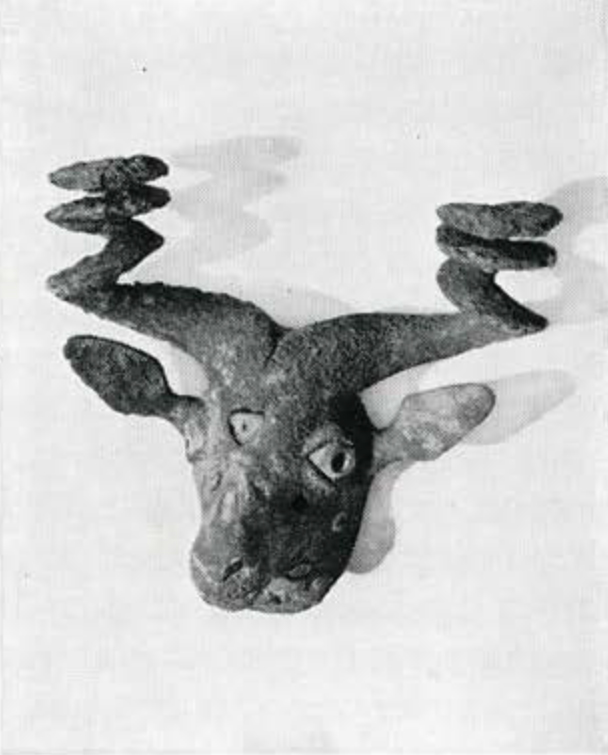
Museum Object Number: 29-20-3
Image Number: 8058
The hero of the Flood, Uta-napishtum, the Sumerian Noah, lived at Shuruppak (Fâra), a city on the old Euphrates, half way between Nippur and Uruk. Fâra is well represented in the Babylonian Section of the University Museum by two magnificent heads in copper (Figure 29) found on the site in 1900 by H. V. Hilprecht, then visiting Nippur. These so-called Markhur goats’ (properly antelopes’) heads, bequeathed to the Philadelphia Museum of Art, have been graciously lent to the University Museum. The heads, cast in the hollow, have exquisitely modelled horns, eyes and nostrils. The eyes are inlaid, made of shell and lapis. Four spots on the neck and four across the nose are inlaid roundels of shell with a red central dot. A triangular piece is inlaid in the forehead. For beauty and skill these masterpieces compare well with the animal heads of al-‘Ubaid and of the royal tombs at Ur: the silver gazelle head; the silver cow and lioness heads; the silver stag of the boat-shaped lyre; the bearded bulls’ heads of gold, cast or plated, which decorated other lyres; and finally, the rampant goat in the bush, a polychrome work blending metal and mosaic, gold, copper, shell and lapis.
The excavation of Fâra begun by the Germans (1902-3) was resumed for a short season in 1931 by Dr. Erich Schmidt representing the University Museum.
Traces of a great flood have been found also at Ur. A deposit more than three metres thick of water-laid sand, covering the remains of the al-‘Ubaid period, was discovered by Mr. Woolley at the bottom of the great pit in the Royal Cemetery. The original sea-level was 4.50 m. below it.

